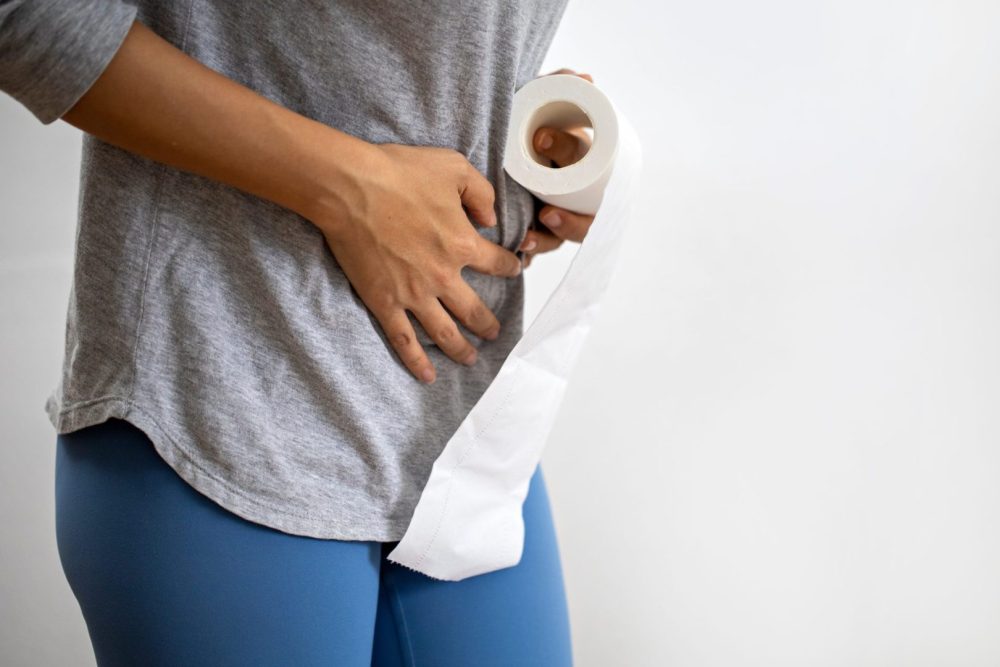When diarrhea strikes unexpectedly, the urgent need for relief can turn a normal day into an uncomfortable ordeal. This common digestive upset affects millions of people regularly, causing inconvenience, discomfort and potential health complications if not addressed promptly. The good news is that most cases of acute diarrhea can be effectively managed at home using simple, natural methods that work quickly without requiring prescription medications or emergency medical visits.
Understanding how to respond effectively to diarrhea episodes empowers individuals to take control of their digestive health and find relief using readily available household items. These time-tested approaches work by addressing the underlying causes of diarrhea while supporting the body’s natural healing processes. The key lies in implementing the right combination of dietary adjustments, hydration strategies and natural remedies that target both symptoms and recovery.
The urgency of treating diarrhea extends beyond mere comfort considerations. Rapid fluid loss can lead to dangerous dehydration, particularly in vulnerable populations. Electrolyte imbalances can develop quickly, affecting heart rhythm and muscle function. The digestive system’s delicate balance requires careful restoration to prevent prolonged symptoms and complications.
Step 1: immediate hydration protocol
The first and most critical intervention involves implementing an immediate hydration protocol designed to replace lost fluids and essential minerals. Diarrhea can cause rapid dehydration as the body loses water and electrolytes faster than normal intake can replace them. This fluid loss creates a cascade of problems that can worsen symptoms and delay recovery if not addressed promptly.
Plain water alone is insufficient for replacing what the body loses during diarrhea episodes. The intestinal tract needs specific combinations of sodium, potassium and glucose to optimize fluid absorption. Creating an effective rehydration solution at home requires understanding these proportions and implementing them correctly.
A homemade oral rehydration solution can be prepared using common kitchen ingredients. Mixing one teaspoon of salt and two tablespoons of sugar in one liter of clean water creates a solution that closely mimics commercial rehydration products. This mixture should be consumed in small, frequent sips rather than large amounts that might trigger additional digestive upset.
The temperature of rehydration fluids can impact their effectiveness and tolerability. Room temperature or slightly warm liquids are generally better absorbed than ice-cold beverages, which can shock the digestive system and potentially worsen cramping. Adding a small amount of lemon juice can improve taste while providing additional potassium.
Step 2: strategic dietary modifications
The second powerful step involves implementing strategic dietary modifications that support digestive recovery while avoiding foods that might perpetuate symptoms. The traditional approach of completely avoiding food during diarrhea has been replaced by more nuanced strategies that provide necessary nutrients while minimizing digestive stress.
The BRAT diet concept (bananas, rice, applesauce, toast) provides a foundation for understanding which foods support recovery, though modern approaches expand beyond these basics. These foods share characteristics that make them ideal during digestive upset: they’re bland, low in fiber, and easy to digest while providing essential nutrients and energy.
Bananas offer particular benefits during diarrhea episodes because they’re rich in potassium, which is lost during frequent bowel movements. Their natural pectin content can help firm loose stools, while their mild nature rarely triggers additional digestive upset. Eating bananas slowly and allowing them to reach room temperature maximizes their benefits.
White rice serves as an excellent binding food that can help slow digestive transit time. Plain, well-cooked rice is easily absorbed and provides necessary carbohydrates for energy without adding fiber that might stimulate additional bowel movements. Adding a small amount of salt to rice water creates additional rehydration benefits.
Step 3: probiotic restoration
The third transformative approach focuses on restoring healthy gut bacteria through strategic probiotic intervention. Diarrhea often disrupts the delicate balance of intestinal flora, creating an environment where harmful bacteria can proliferate while beneficial organisms are diminished. Restoring this balance accelerates recovery and helps prevent recurring episodes.
Natural yogurt with live cultures provides beneficial bacteria that can help restore intestinal balance. However, choosing the right type of yogurt is crucial during active diarrhea. Plain, unsweetened varieties are preferable to flavored options that might contain sugars or additives that could worsen symptoms. Greek yogurt often provides higher concentrations of beneficial bacteria.
Kefir represents another powerful probiotic option that may be even more beneficial than traditional yogurt. This fermented milk product contains a broader spectrum of beneficial bacteria and yeasts that can help restore comprehensive gut health. Starting with small amounts allows the digestive system to adjust gradually.
Fermented foods like sauerkraut or kimchi can provide probiotic benefits, though their introduction should be delayed until acute symptoms begin improving. These foods are more potent than dairy-based probiotics but may be too stimulating during the initial stages of digestive upset.
Step 4: natural binding agents
The fourth effective strategy involves using natural binding agents that can help slow digestive transit time and firm loose stools. These substances work by absorbing excess water in the intestines while providing bulk that normalizes bowel movements. Understanding which natural materials provide these benefits allows for targeted intervention using common household items.
Oatmeal prepared with water rather than milk creates an excellent binding effect while providing gentle nutrition. The soluble fiber in oats forms a gel-like substance that can help slow digestion and absorb excess fluid. Plain, well-cooked oatmeal without added sugars or spices provides maximum benefits without risking digestive irritation.
Pectin-rich foods like cooked apples (without skin) can provide natural binding effects. Applesauce made without added sugars offers concentrated pectin that helps firm stools while providing easily absorbed carbohydrates. The cooking process breaks down fiber that might otherwise stimulate bowel movements.
Potato water, the starchy liquid remaining after boiling potatoes, provides binding compounds along with essential electrolytes. This often-discarded liquid contains concentrated starches that can help normalize stool consistency while replacing lost minerals. Drinking cooled potato water in small amounts can provide multiple benefits.
Step 5: anti-inflammatory interventions
The fifth powerful method focuses on reducing intestinal inflammation that often accompanies and perpetuates diarrhea episodes. Inflammation can create a cycle where irritated tissues produce excess fluid and mucus, leading to continued loose stools and discomfort. Natural anti-inflammatory approaches can break this cycle and promote healing.
Chamomile tea provides gentle anti-inflammatory effects that can soothe irritated intestinal tissues. This mild herbal remedy has been used traditionally for digestive upset and offers additional benefits including mild antispasmodic effects that may reduce cramping. Preparing weak chamomile tea and drinking it at room temperature maximizes benefits while minimizing potential irritation.
Ginger represents another powerful anti-inflammatory option that can address multiple aspects of digestive upset. Fresh ginger tea can help reduce inflammation while potentially easing nausea that sometimes accompanies diarrhea. Grating fresh ginger root and steeping it in hot water creates a potent but gentle remedy.
Turmeric contains powerful anti-inflammatory compounds that may help reduce intestinal irritation. However, this spice should be used cautiously during active diarrhea, as it can be stimulating for some people. Starting with very small amounts mixed into bland foods allows individuals to assess their tolerance.
Step 6: strategic rest and positioning
The sixth crucial intervention involves implementing strategic rest and positioning techniques that support the body’s natural healing processes while minimizing discomfort. Physical positioning can impact digestive function and comfort levels during diarrhea episodes, while appropriate rest allows energy to be directed toward recovery.
Lying on the left side can help reduce cramping and discomfort by taking advantage of natural anatomical positioning. This position may help slow digestive transit time and reduce the urgency that often accompanies diarrhea. Using pillows to support comfortable positioning reduces strain and promotes relaxation.
Gentle abdominal massage using circular motions can help reduce cramping and promote normal digestive function. Light pressure applied in clockwise directions follows the natural path of digestion and may help normalize bowel patterns. Warm hands or a warm compress can enhance the soothing effects of massage.
Stress reduction techniques become particularly important during digestive upset because stress can worsen symptoms and delay recovery. Deep breathing exercises, progressive muscle relaxation, and other calming techniques can help reduce the physical and emotional stress that often accompanies sudden digestive problems.
Step 7: temperature therapy
The seventh effective approach utilizes temperature therapy to provide comfort and potentially improve digestive function during diarrhea episodes. Heat and cold applications can affect blood flow, muscle tension, and nerve signaling in ways that may reduce symptoms and promote recovery.
Warm compresses applied to the abdomen can help reduce cramping and provide comfort during acute episodes. A heating pad on low setting or a warm towel can deliver gentle heat that relaxes abdominal muscles and may help normalize digestive function. Avoiding excessive heat prevents skin irritation and potential burns.
Warm baths can provide full-body relaxation that may help reduce stress and promote overall comfort during digestive upset. The warm water can help relax tense muscles throughout the body while providing a soothing environment that promotes rest and recovery. Adding Epsom salts may provide additional mineral absorption through the skin.
Cold applications may be beneficial for some individuals, particularly if inflammation is suspected. Cool compresses applied for short periods can help reduce inflammation and provide numbing effects that may reduce discomfort. Alternating warm and cool applications sometimes provides better relief than either temperature alone.
Step 8: gradual reintroduction protocol
The eighth and final strategy involves implementing a gradual reintroduction protocol that allows the digestive system to return to normal function without triggering relapse. This systematic approach to resuming regular eating patterns can prevent the cycle of improvement followed by setback that often characterizes poorly managed diarrhea recovery.
The reintroduction process should begin with the blandest, most easily digested foods and progress gradually toward normal dietary variety. Starting too aggressively with complex or potentially irritating foods can undo progress and restart the cycle of digestive upset. Patience during this phase is crucial for long-term success.
Timing the reintroduction process correctly requires paying attention to symptoms and progress indicators. Waiting until bowel movements begin to normalize and cramping subsides significantly reduces the risk of setbacks. This might mean extending the bland diet phase longer than initially anticipated.
Monitoring individual responses to reintroduced foods helps identify specific triggers or sensitivities that might contribute to digestive problems. Keeping a simple food and symptom diary during recovery can provide valuable insights for preventing future episodes and maintaining optimal digestive health.
The journey from acute diarrhea to complete recovery requires patience, consistency, and attention to the body’s signals. These eight powerful steps provide a comprehensive framework for managing digestive upset naturally while supporting the body’s inherent healing capabilities. Success depends on implementing these strategies systematically while remaining flexible enough to adjust approaches based on individual responses and recovery progress.
















